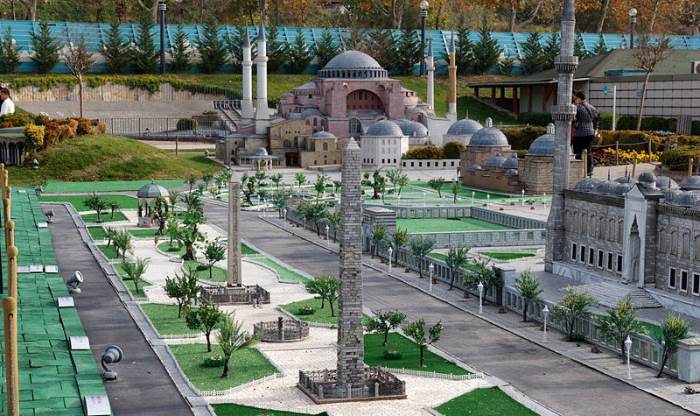Sultanahmet Square, which is among the most important squares of Istanbul, sheds light on how deep and rich the history of Istanbul is. Having hosted many different civilizations, Istanbul, with its transition from the Romans to the Byzantines and the Ottomans, has always been home to different works of art that have survived to the present day with the complexity of different historical monuments and squares. Within the borders of this square, there was the Hippodrome from the Byzantine period and the Horse Square from the Ottoman period.
Sultanahmet Square or once which was called Roman Hippodrome was the beginning of the road to Rome. The first milestone pointing the way to Rome was here and still can be seen today. Baths, temples, religious, cultural, administrative, and social attractions were located in this area. Sultanahmet Square continued its central importance in the Byzantine and Turkish periods. The most important monuments of Istanbul, Hagia Sophia, Blue Mosque, Turkish and Islamic Arts Museum, Basilica Cistern are here, around the square.

The Hippodrome, which existed in the place of Sultanahmet Square during the Byzantine period, was an area where the people gathered until the 10th century. At the same time, it was the area where the rebellions started in the same period. The largest of these riots was called the ”Nika Uprising”. It is said that 30 thousand people died in this uprising due to clashes between factions. And also the Byzantine Emperor Andronikos was lynched here by angry mobs. Three monuments from the Roman era have survived to the present day. These are called Walled Obelisk, Thutmose Obelisk, and Serpent Column.
Sultanahmet Square had maintained its importance as a meeting, entertainment, excitement, and sports center until the 10th century. Besides chariot races, groups of musicians, belly dancers, acrobats, fights with wild animals were held here. There were plenty of holidays in the Roman period for all these occasions. On the eastern long side of the hippodrome, which was shaped like a giant letter U, was the emperor’s lodge, in the form of a balcony, with 4 bronze horses on its roof. In the middle, there was a low wall dividing the sand-covered field of the hippodrome, around which cars raced, and on this wall were monuments brought from various parts of the Empire, and statues of famous horse racers and their horses. A famous racecar rider would lavish himself with every imaginable pleasure. Contestants were divided into teams such as greens, blues, yellows, or reds. From time to time politics would interfere with races, the struggles of opposing powers could turn into riots and eventually terrible massacres.
Roman Ruins in the Hippodrome of Istanbul Walled Obelisk Obelisk of Theodosius
In the Ottoman period, Sultanahmet Square was reconstructed in the western part of the Hippodrome. The Janissary revolts started mostly in Sultanahmet Square, which was also important during the Ottoman period. Sultanahmet Square later came to be known with the executions.
Contact Turkish Tour Guide for Sultanahmet Square Tour
Sultanahmet Square and attractions around it are all must-visits for any tourist spending time in Istanbul. Contact me to learn more about Sultanahmet Square and to hire an English-speaking Turkish tour guide for Sultanahmet and old Istanbul tour. See you soon, Hasan Gülday.